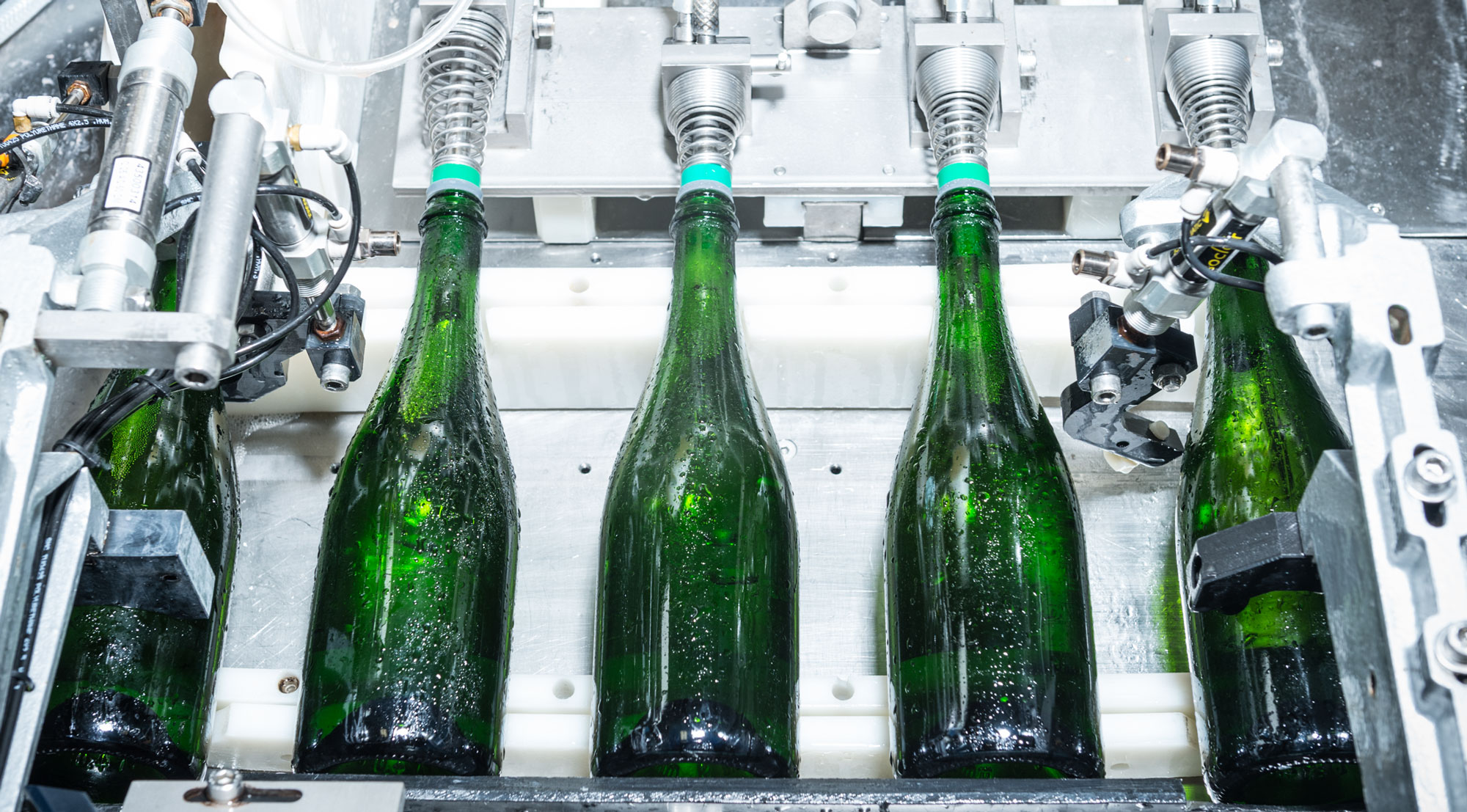Disgorging. It’s the art of getting all of the dead yeast out of a bottle of bubbly. Done right, and we have a crystal clear bottle of sparkling awesomeness. Done wrong, and we have a lot of lost wine on the floor and a cloudy mess in the bottle. Although we used to disgorge completely by hand, we now have some semi-automatic equipment to help us end up with a lot more bottles of sparkling awesomeness.
Disgorging happens after bottles have been riddled. All of the yeast has settled into the neck of the bottle. From there, bottles are placed in our neck freezer, where a food-grade glycol solution freezes the yeast and a small bit of wine in the neck of the bottle. This frozen yeast and wine is called an ice slug.
We then remove the bottle from the neck freezer, rinse the bottle off, and places it on the disgorger. The disgorger lifts off the crown cap, and the pressure inside the bottle forces the yeast slug out. Now we have a yeastless (but bone dry) bottle of bubbly! The bottle is than shifted to the “dosage” station, where the liquor is added. “Liquor” refers to a highly concentrated solution of juice or wine and any residual sugar that our winemakers want to add back into the wine. (Very few sparkling wines have 0% sugar, with the exception of Brut Zero sparklers.) In the next station, the bottle is topped off with extra base wine and then is ready to be corked and fitted with a cap and wire hood.
